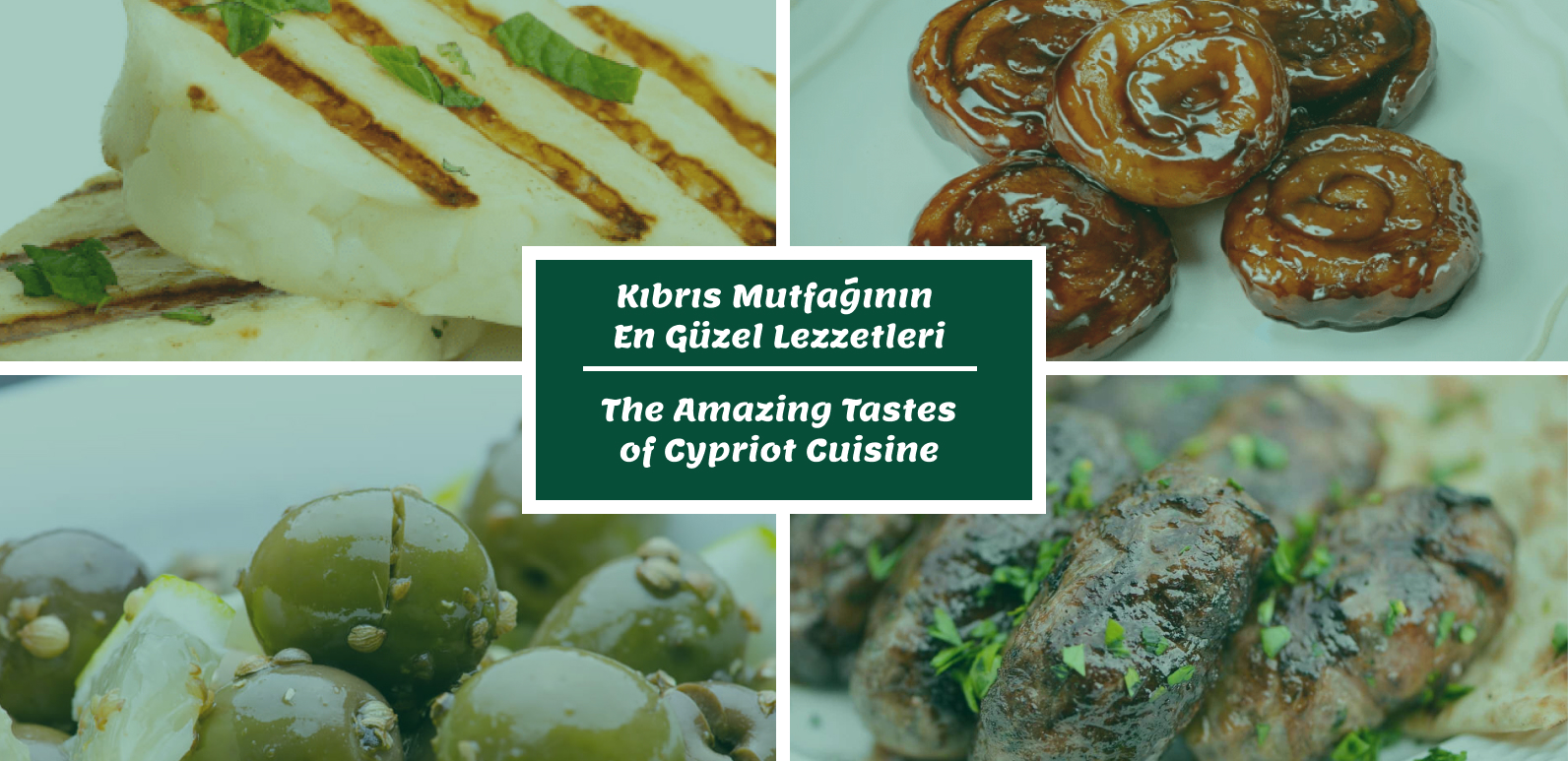
The Mediterranean's 3rd largest island, Cyprus, was ruled by countless civilizations throughout history, and the influence of this rich history can be observed in its cuisine. Apart from the well-known halloumi and molokhia, there are many more flavors waiting to be discovered. Let's explore the magnificent Cypriot cuisine together.
Paphos Gum is a type of gum made from the resin of the mastic tree. It's readily available in most markets, with a yellowish-white color and a hard texture. Chewing it is particularly enjoyable, and it has a distinctive flavor.
Halloumi is a type of cheese usually made from sheep or goat milk. It's consumed fried, grated over pasta, or sliced. It's also aged in special containers, which results in a "matured" version that is very flavorful.
Kleftiko, a must-have in Cyprus, is a dish made by cooking chunks of lamb or goat meat, along with cubed potatoes, in a stone oven. Whole bay leaves are often added to it. The taste is truly amazing.
Bread kadayif consists of two layers of special bready pastry filled with curd cheese and crushed almonds. Warm syrup is poured over it, and it's baked over low heat. One of the most famous desserts of Cyprus.
Kolokas, also known as taro or elephant ear, is a plant from the potato and yam family. It loves water and has large leaves. It can grow up to 2-3 kilograms. The dish prepared from its root is quite unique and delicious.
A smaller version of kolokas :) Its fried form, often prepared with potatoes, is also very tasty.
In Cypriot cuisine, pirohu, curd cheese borek, pumpkin borek and halloumi borek are among the most popular pastries. Pirohu is made by boiling dough filled with curd cheese and mint. Grated halloumi is sprinkled on top before serving. There's also a version with minced meat.
Gatmer, also known as tray gatmer, is a popular dessert. Thin layers of dough are spread out like phyllo pastry. Cream is applied on the layers, followed by cinnamon and almonds sprinkled inside. Baked in the oven, the taste is beyond wonderful.
Babutsa, also known as prickly pear, is a fruit from a cactus plant. It's sold packaged in markets or by vendors on the roadside.
Dried molokhia leaves are cooked as a stew with or without meat. Originally an Arab dish, molokhia has become an integral part of Cypriot culture. The process of preparing molokhia is one of the favorite activities of the Cypriots.
Fresh walnuts are soaked in water for 6-7 days to remove bitterness. Then, they are boiled with cloves and almonds. A delightful taste.
Zivania is a high-proof local Cypriot alcohol obtained by distilling fermented grape pomace. It's sharp and strong, often enjoyed with citrus products.
Boiled and marinated, garavolli is commonly eaten alongside kebabs in Cyprus. Once you get past the bias and try them, you will become addicted.
Cypriot meatballs, which include potatoes, are both practical and beloved. They are usually served with yogurt.
Semolina, milk, and mastic gum mixture is placed inside phyllo pastry and then fried. It's served with flower water and powdered sugar. An essential dessert, especially during local fairs.
These exquisite bites are made by stuffing zucchini blossoms, harvested in the early hours of the day, with a filling of rice, tomatoes, lots of lemon, spices, and mint.
Palouze, made from grape juice, is a dessert similar in taste to churchkhela. It's a very tasty variation of pudding.
Special meatball mix is wrapped in sheep or goat "sleeve" fat and grilled. A Cypriot essential.
One of Cyprus' special dishes. Boiled rabbit meat is placed between layers of dough and fried. Especially available during hunting season.
Gullurikya is a Cypriot dessert, quite easy to make. It's made from flour, water, and a small amount of salt. The essential ingredient is carob molasses.
A Cypriot mezze made by drying goat meat with plenty of salt and thyme between pine leaves in the summer. Pine leaves infuse the meat with an incredible aroma and protect it from insects during drying. This dish, which is quite labor-intensive to make, is usually enjoyed with some alcohol.
A type of green olive unique to Cyprus. After cracking the olives and soaking them in water, they are marinated with thyme, garlic, and lemon. The distinct flavor comes from the gollandro/golyandro (cilantro) seed.
Ayrelli is a wild variety of asparagus. Children can be seen carrying bundles of ayrelli along village roads. It's particularly delicious. It's worth noting that picking ayrelli is one of the most famous activities among Cypriots.
We invite you to Northern Cyprus to try these amazing flavors of Cypriot cuisine and much more.